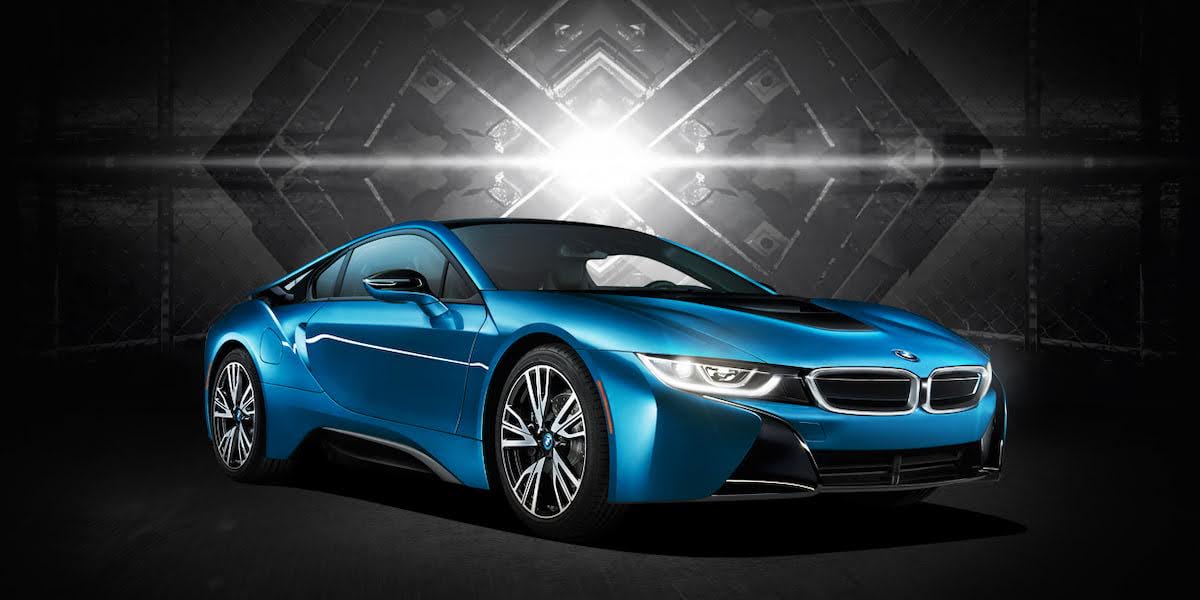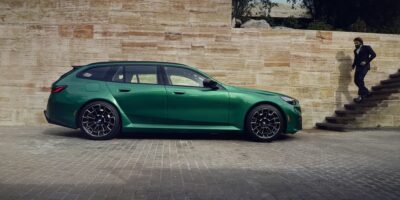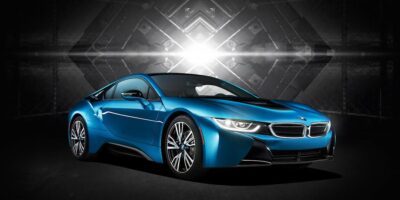When BMW released the BMW i8, it was like nothing anyone had seen before. This amazing car proved that you could have a fast, fun sports car that also cared about the environment. The BMW i8 looked like it came from the future and drove like a dream. But was it really the best sports car experience you could get? Let’s find out.
A Car That Looked Like It Came From Tomorrow
The first thing you noticed about the BMW i8 was how it looked. Those doors that opened upward like butterfly wings? Absolutely stunning. The sleek body and bright LED lights made it look more like a spaceship than a regular car. When you drove down the street, people stopped and stared. Kids pointed from car windows, and other drivers slowed down just to get a better look.
The Famous Scissor Doors
Let’s talk about those incredible doors. They weren’t just for show – they actually served a purpose:
- Easy entry and exit – Despite being a low sports car, the upward-opening doors made getting in and out much easier
- Parking convenience – You needed less space on the sides to open the doors in tight parking spots
- Safety feature – In case of an accident, these doors could be easier to open than traditional side-opening doors
- Instant recognition – Everyone knew it was a BMW i8 just by seeing those doors open
Many people wonder if these doors were reliable. The good news is that BMW engineered them well, and most owners didn’t have major problems with them. However, like any complex mechanism, they did require proper maintenance to keep working smoothly.
That Futuristic Body Design
The BMW i8’s body wasn’t just about looking cool. Every curve and line had a job to do:
- Aerodynamic efficiency – The smooth shape helped the car cut through the air with less resistance
- Airflow management – Special channels directed air around and through the car to keep it stable at high speeds
- Weight reduction – The streamlined design meant less material was needed while still maintaining strength
- Visual impact – The low, wide stance made it look fast even when standing still
People often asked if the wild design affected everyday driving. The answer was mostly no. While the car was low and wide, it was still practical enough for daily use. The only real challenge was steep driveways and speed bumps, which required careful navigation.
LED Lighting That Made a Statement
BMW didn’t just put regular headlights on the i8. They created a lighting system that became part of the car’s personality:
- Laser headlights (on some models) – These provided incredibly bright and precise lighting
- Blue accent lighting – This gave hints about the car’s electric nature
- Adaptive lighting – The lights would turn and adjust based on your steering and speed
- Daytime running lights – These created the i8’s distinctive “face” that people recognized from far away
The LED lights weren’t just pretty to look at. They used much less energy than regular bulbs, which was important for a car trying to be efficient. Plus, they lasted much longer, so you wouldn’t need to replace them as often.
The Magic of Carbon Fiber Construction
BMW didn’t just focus on making it look cool on the outside. They used special materials like carbon fiber to keep the car light but strong. This was important because the car needed to carry both a regular engine and electric parts.
Here’s why carbon fiber was such a big deal for the i8:
- Weight savings – Carbon fiber is about five times lighter than steel but just as strong
- Better performance – Less weight means better acceleration, handling, and efficiency
- Durability – Carbon fiber doesn’t rust or corrode like metal does
- Premium feel – The material has a high-tech look that matched the car’s futuristic theme
You might wonder if carbon fiber made the car more expensive to fix after an accident. The honest answer is yes – carbon fiber repairs can be costly and require specialized shops. However, the material is also very strong, so it often protects passengers better than traditional materials in crashes.
Interior Design That Surprised Everyone
Inside, BMW used recycled materials that still felt luxurious. You got to feel good about helping the environment while sitting in a really nice car. But there was so much more to the interior story:
Sustainable Materials Used:
- Recycled plastics – Turned into high-quality interior panels
- Natural fibers – Used in seat fabrics and trim pieces
- Renewable leather alternatives – For a more eco-friendly luxury feel
- Recycled metals – Used in trim pieces and structural components
Comfort and Technology Features:
- Sport seats – Designed to hold you in place during spirited driving
- Digital displays – Showed all the hybrid system information clearly
- Premium sound system – Made every drive more enjoyable
- Climate control – Worked efficiently whether running on gas or electric power
Many buyers wondered if the eco-friendly materials would hold up over time. BMW’s testing showed that these materials were actually more durable than some traditional options. Plus, they didn’t off-gas harmful chemicals like some conventional car materials do.
How the Design Affected Daily Use
People always asked practical questions about living with such a futuristic-looking car:
Was it hard to see out of? The low roofline and small windows did create some visibility challenges, especially when backing up. However, BMW included cameras and sensors to help with parking and maneuvering.
Did it attract unwanted attention? Yes, the i8 definitely drew attention wherever it went. Some owners loved this, while others found it could be overwhelming at times. You had to be comfortable with people wanting to talk about your car.
Was it practical for everyday errands? Despite its exotic looks, the i8 was surprisingly practical. It had enough storage space for groceries or weekend bags, and the comfortable seats made longer drives enjoyable.
The Color Options That Made Each One Unique
BMW offered several color choices that really showed off the i8’s design:
- Crystal White – Made the car look clean and futuristic
- Sophisto Grey – Gave it a more subtle, sophisticated appearance
- Protonic Blue – Highlighted the car’s electric nature
- Protonic Red – Created a bold, eye-catching look
Each color interacted differently with the car’s complex body lines and surfaces. The lighter colors showed off the aerodynamic details better, while darker colors made the car look more mysterious and sleek.
This incredible design made the BMW i8 instantly recognizable and helped it stand out in a world full of similar-looking cars. Every element, from those amazing doors to the efficient LED lights, worked together to create something that looked like it belonged in the future while still being practical enough for today’s roads.
The Smart Plug-In Hybrid System That Changed Everything
Here’s where the BMW i8 got really interesting. It had a plug-in hybrid system that combined a small but powerful gas engine with an electric motor. Together, they made 369 horsepower, which is plenty of power for serious fun. The plug-in hybrid setup meant you could drive on just electricity for short trips, but you always had the gas engine ready for longer drives.
The electric motor gave you instant power the moment you pressed the gas pedal. There was no waiting around like with regular engines. When you needed more speed, the gas engine would jump in to help. The best part? You could get great gas mileage while still having a blast driving. That was almost impossible to find in sports cars back then.
Performance That Made You Smile
Don’t think that being eco-friendly meant the BMW i8 was slow. This car could go from zero to 60 mph in just 4.2 seconds. That’s fast enough to pin you back in your seat and put a big smile on your face. The top speed was 155 mph, which is more than fast enough for any public road.
The car handled really well too. BMW put the heavy battery low in the car, which helped it stay stable when going around corners. The electric motor powered the front wheels while the gas engine powered the back wheels. This gave you great traction and made the car feel confident and secure, even when you were driving it hard.
Electric Driving for Daily Life
The BMW i8 could drive about 18 miles on just electric power. That might not sound like much today, but it was pretty good when this car first came out. For many people, that was enough to get to work and back without using any gas at all. You could feel good about not polluting during your daily commute.
Charging the battery was easy. You could plug it into a regular wall outlet at home, though it would take a while. If you had a special 240-volt charger installed, you could fill up the battery in less than three hours. Most people would just plug it in overnight and wake up to a full charge.
Cool Technology That Made Driving Fun
BMW packed the i8 with all sorts of smart features that made every drive feel like you were piloting a spacecraft. The technology wasn’t just fancy gadgets for show – it actually made the car more fun, efficient, and easier to drive. Let’s break down all the amazing tech that made the i8 special.
The Different Driving Modes Explained
You could choose different driving modes depending on what you wanted to do. Want to drive silently on electric power? There was a mode for that. Want maximum performance with both the gas engine and electric motor working together? There was a mode for that too. But there was actually much more to it:
eDrive Mode (Pure Electric):
- Silent operation – Perfect for early morning departures or quiet neighborhoods
- Zero emissions – Great for city driving where air quality matters
- Maximum efficiency – Used the least amount of energy possible
- Limited speed – Capped at about 75 mph to preserve battery life
- Range focus – Stretched the electric-only driving as far as possible
Comfort Mode (Balanced Approach):
- Smooth transitions – The car decided when to use gas or electric power
- Best fuel economy – Automatically chose the most efficient power source
- Quiet operation – Kept things peaceful unless you needed more power
- Adaptive response – Adjusted to your driving style over time
- Daily driving perfect – Ideal for commuting and regular trips
Sport Mode (Maximum Performance):
- Full power available – Both gas engine and electric motor working together
- Instant throttle response – No delay when you pressed the gas pedal
- Sharper handling – Suspension and steering became more responsive
- Engine sound enhancement – Made the three-cylinder engine sound more exciting
- Performance priority – Focused on speed and fun over efficiency
People often asked which mode was best for different situations. Here’s what most owners discovered:
- City driving – eDrive mode for quiet, clean operation
- Highway cruising – Comfort mode for the best balance
- Weekend fun drives – Sport mode for maximum excitement
- Parking lots – eDrive mode to avoid disturbing others
The Amazing Dashboard Display System
The dashboard showed you exactly what was happening with the power. You could see when the electric motor was working, when the gas engine kicked in, and when the car was using braking to recharge the battery. It was like having a window into how the car worked, which made driving it even more interesting.
What the Energy Flow Display Showed:
- Power direction – Arrows showed electricity flowing between components
- Battery level – A clear gauge showed how much electric charge remained
- Engine status – You could see when the gas engine was running or off
- Regenerative braking – Watch the battery recharge when you slowed down
- Current efficiency – Real-time feedback on how efficiently you were driving
The Digital Instrument Cluster Features:
- Customizable layouts – Choose what information was most important to you
- Navigation integration – Turn-by-turn directions right in front of you
- Performance data – Track your lap times if you took it to a racetrack
- Efficiency coaching – Tips on how to drive more efficiently
- Maintenance reminders – Keep track of service needs for both gas and electric systems
Many drivers found themselves becoming more engaged with their driving after seeing all this information. It was like playing a video game where you tried to maximize efficiency or performance depending on your mood.
Advanced Infotainment and Connectivity
The BMW i8 came with cutting-edge entertainment and information systems that were ahead of their time:
iDrive System Features:
- Touchscreen control – Easy-to-use interface for all car functions
- Voice commands – Control many features without taking your hands off the wheel
- Smartphone integration – Connect your phone for music, calls, and apps
- Real-time traffic – Find the fastest routes and avoid jams
- Charging station locator – Find places to plug in and charge the battery
Audio System Options:
- Standard sound system – Good quality for everyday listening
- Harman Kardon upgrade – Premium speakers for music lovers
- Surround sound experience – Made you feel like you were at a concert
- Sound customization – Adjust the audio to your personal preferences
- Quiet cabin benefits – Electric driving made music sound even better
Smart Climate Control Technology
The climate control system in the i8 was more complex than regular cars because it had to work efficiently with both gas and electric power:
Efficient Heating and Cooling:
- Heat pump technology – Used less energy than traditional heaters
- Pre-conditioning – Warm up or cool down the car while plugged in
- Zone control – Different temperatures for driver and passenger
- Energy-saving modes – Reduced power use when running on battery
- Remote operation – Start climate control from your phone before getting in
People often wondered how well the air conditioning worked when running on electric power only. The answer was quite well – BMW designed the system to be efficient enough that you could stay comfortable even in eDrive mode, though it would reduce your electric range slightly.
Regenerative Braking Technology
One of the coolest features was how the car could recharge its own battery while driving:
How Regenerative Braking Worked:
- Energy capture – When you lifted off the gas or braked, the electric motor became a generator
- Battery charging – That captured energy went back into the battery
- Extended range – This process helped the electric motor run longer
- Brake pad savings – Less wear on traditional brakes meant lower maintenance costs
- Smooth operation – You could barely feel the system working
Different Regeneration Levels:
- Light regeneration – Barely noticeable, like coasting in a regular car
- Medium regeneration – Noticeable slowdown when you lifted off the gas
- Strong regeneration – Almost like one-pedal driving in city traffic
Safety and Driver Assistance Features
BMW didn’t forget about safety when loading the i8 with technology:
- Collision warning – Alert you to potential crashes ahead
- Automatic emergency braking – Stop the car if you don’t react in time
- Lane departure warning – Keep you from drifting out of your lane
- Parking sensors – Help navigate tight spaces with that low, wide body
- Backup camera – Essential for a car with limited rear visibility
Optional Advanced Features:
- Adaptive cruise control – Maintain safe distances automatically
- Traffic jam assist – Handle stop-and-go traffic for you
- Parking assistance – Help parallel park automatically
- Head-up display – Project important info onto the windshield
Smartphone Integration and Apps
BMW created special apps that worked with the i8 to make ownership easier:
BMW ConnectedDrive Features:
- Remote monitoring – Check battery level and range from anywhere
- Charging management – Schedule charging during off-peak hours
- Vehicle finder – Locate your car in crowded parking lots
- Service scheduling – Book maintenance appointments through the app
- Trip planning – Plan routes that included charging stops
Real-World Benefits:
- Peace of mind – Always know your car’s status
- Cost savings – Charge when electricity rates are lowest
- Convenience – Start climate control before getting in the car
- Efficiency tracking – Monitor your driving habits and improve them
Questions People Always Asked About the Technology
Was all this technology reliable? Most owners found the systems to be quite dependable. BMW had been developing these technologies for years before putting them in the i8. However, like any complex system, occasional software updates were needed to keep everything running smoothly.
Did the technology make the car more expensive to maintain? Yes, the advanced systems did require specialized knowledge to service. However, many of the electronic components were actually more reliable than mechanical parts, so some maintenance costs were actually lower.
Was it hard to learn all the different features? BMW designed the systems to be intuitive, but there was definitely a learning curve. Most owners spent the first few weeks discovering new features and figuring out their preferences.
Did the technology work well in all weather? The systems were designed to work in all conditions, but extreme cold could affect battery performance and range, just like with any electric vehicle.
This incredible technology made the BMW i8 feel like a glimpse into the future of driving. Every trip became an opportunity to explore new features and learn more about how hybrid technology could make driving both more efficient and more fun.
How It Compared to Other Cars
When the BMW i8 first came out, there really wasn’t anything else like it. Other sports cars were still focused only on going fast and using lots of gas. BMW took a different approach and created something that was both fast and efficient. It was like getting the best of both worlds.
The car wasn’t cheap, but BMW positioned it as a premium product for people who wanted the latest technology. Early buyers were willing to pay extra to own something truly special and different from everything else on the road.
What It Was Like to Own One
People who owned a BMW i8 loved how versatile it was. You could drive to work every day using just electric power and barely spend anything on gas. Then on weekends, you could take it out for a fun drive and use the full power of both the electric motor and gas engine.
Taking care of the car required finding mechanics who understood both electric and gas systems. BMW trained their dealers well, but the complex technology did mean higher maintenance costs compared to regular cars. Most owners felt it was worth it for such an advanced and unique vehicle.
The Impact It Had on Other Cars
Even though BMW stopped making the i8 in 2020, it changed the car industry forever. It showed that hybrid technology could work in high-performance cars without making them boring. Many of today’s fast hybrid and electric cars can trace their ideas back to what BMW first did with the i8.
BMW used what they learned from the i8 to create their newer electric cars like the iX and i4. The experience helped them become a leader in making luxury cars that are both fun to drive and good for the environment.
Should You Consider One?
The BMW i8 was special because it proved you didn’t have to choose between having fun and being responsible. It wasn’t the fastest car ever made, and it didn’t have the longest electric range, but it combined both worlds better than almost any other car.
If you’re thinking about a used i8 or looking at BMW’s current hybrid and electric cars, think about how you drive. Do you want something that can be efficient for daily driving but exciting when you want it to be? Do you like having the latest technology and standing out from the crowd? If so, BMW’s approach to sports cars might be perfect for you.
Ready to Experience BMW Innovation?
The BMW i8 started a revolution in how we think about sports cars. It showed that you can have amazing performance while still caring about the environment. Today, BMW continues this tradition with even more advanced hybrid and electric vehicles.
Ready to experience BMW’s innovative approach to luxury performance vehicles? Contact Braman BMW of West Palm Beach today to explore our current selection of BMW hybrid and electric models that continue the legacy of innovation first established by the groundbreaking i8.






